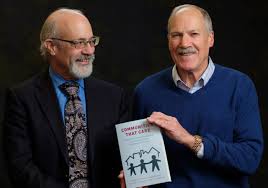Social Development Strategy: preventive approach for the positive development of Children
The Social Development Strategy provides a useful framework for Parents and Caregivers to implement actions to prevent problematic behaviors in Children. A practical conceptualization has been the Caring Communities Model with solid evidence in the prevention of 6 problematic behaviors such as drug addiction, crime, violence, school dropout, among others.
KIDS UP
1/31/20243 min read


The Social Development Strategy is a general theory of human behavior that attempts to explain and predict antisocial behavior, such as crime and drug use, through the specification of predictive relationships of development, giving great relevance to risk factors. and protection.
According to this theory, human beings are satisfaction seekers and their behavior depends on the perceived interest in their actions. That is, people get involved and participate in activities based on the satisfaction benefit they can get from them.
The Social Development Strategy proposes that there are four factors that influence the satisfaction that people obtain from their activities: opportunities, skills, recognition and clear standards of behavior.
Opportunities refer to the availability and accessibility of prosocial (positive) or antisocial (negative) activities in different social contexts, such as family, school, peer group, and community.
Skills refer to people's ability and competence to successfully participate in activities that interest and satisfy them.
Recognition refers to the reinforcement and appreciation that people receive from others for their participation in activities, whether prosocial or antisocial.
Clear standards of behavior refer to the norms and expectations that people have about what is acceptable or unacceptable in their social context.
The Social Development Strategy argues that if people have more opportunities, skills and recognition to engage in prosocial activities than in antisocial activities, and if clear standards of behavior encourage prosocial behaviors, then people will develop a positive social bond with their context. and will be less likely to engage in antisocial behavior.
Conversely, if people have more opportunities, skills, and recognition to engage in antisocial activities than in prosocial activities, and if clear standards of behavior are ambiguous or tolerate antisocial behavior, then people will develop a negative social bond with their context. and will be more likely to engage in antisocial behavior.
An example of how these factors operate in the prevention of drug use would be the following:
A family that provides opportunities for their children to participate in fun and healthy family activities, such as playing, reading, playing sports, etc., is reducing the risk of their children seeking satisfaction from drug use.
A school that teaches life skills, such as communication, problem solving, self-esteem, etc., is increasing the protection of its students from successfully facing the challenges and temptations they may encounter in their environment.
A peer group that recognizes and values its members for their qualities and achievements, and not for their drug use, is strengthening the positive social bond of its members and their motivation to pursue prosocial behaviors.
A community that establishes and enforces clear standards of drug use behavior, such as laws, regulations, campaigns, etc., is creating a social climate that discourages antisocial behavior and promotes prosocial behavior.
The Social Development Strategy is a tool for social prevention, it is a set of actions that are carried out to avoid or reduce the appearance of social problems, such as crime, violence, drug use, teenage pregnancy, school dropouts. , etc. Social prevention is based on scientific knowledge of the factors that influence human development and social behavior, both those that increase the risk of people becoming involved in social problems, and those that reduce that risk and increase protection. . One of the theoretical models that has contributed the most to the knowledge and practice of social prevention is the theory of social development, created by researchers J. David Hawkins and Richard F. Catalano, from the University of Washington, USA.
The Social Development Strategy offers a tool for social prevention, since it allows us to identify the risk and protection factors that occur in each social context and design strategies to reduce the former and increase the latter, in order to promote healthy development. of people and prevent social problems.
The Social Development Strategy has also inspired the "Communities That Care" (CTC) system, which is a methodology for the planning, execution and management of community work on social prevention, which has been successfully implemented in various parts of the world. , including Chile, which since 2014 has implemented the San Carlos de Maipo Foundation together with the University of Washington. The theory of social development is, therefore, a valuable contribution to the field of social prevention, which invites us to understand and intervene in the factors that influence the satisfaction and social bond of people, in order to promote behaviors positive and prevent negative behaviors, which affect both people and society.
